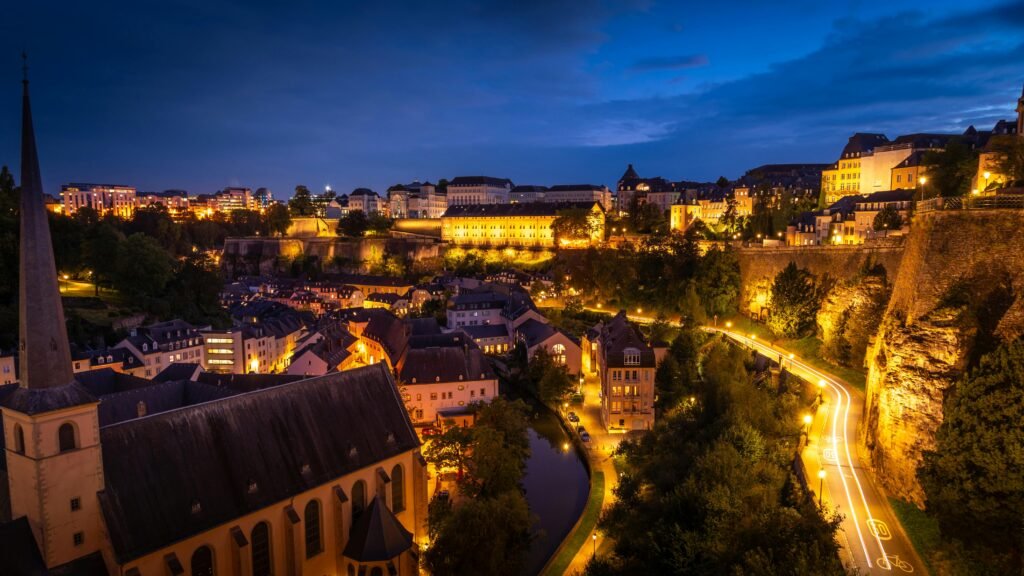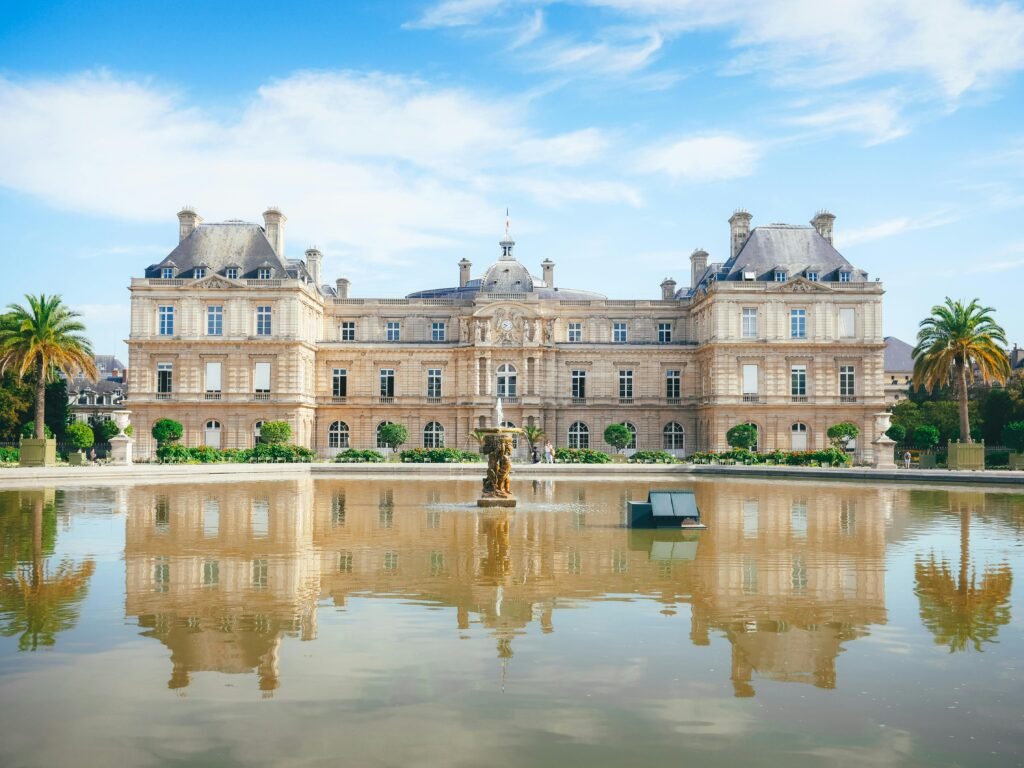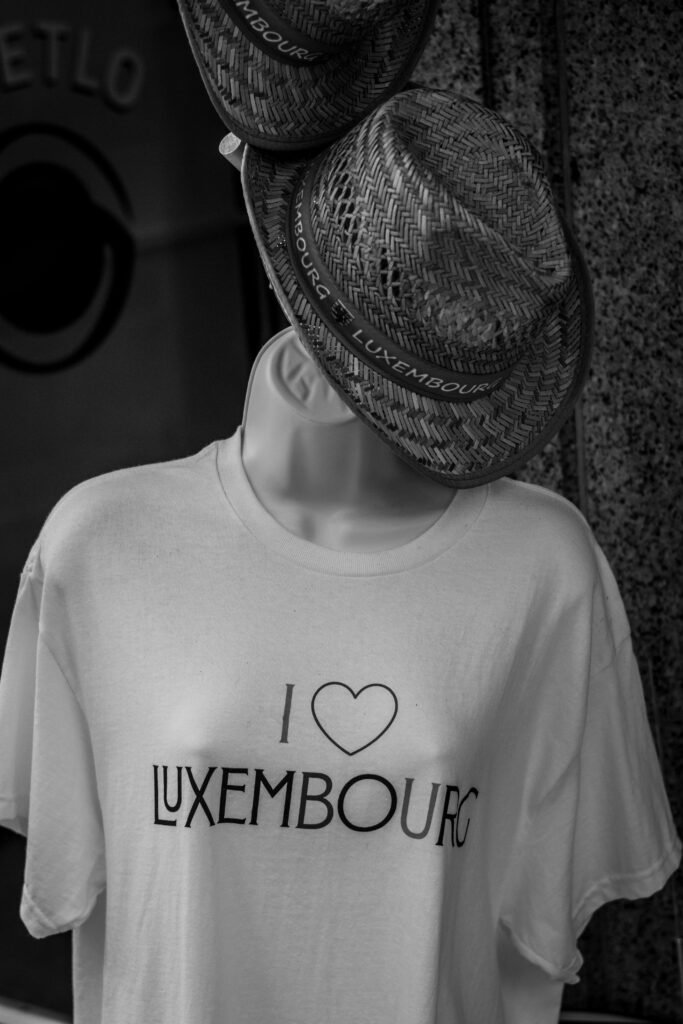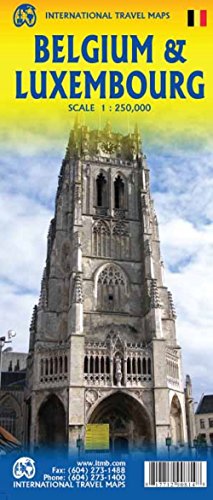Introduction to Luxembourg City
Luxembourg City, the capital of the Grand Duchy of Luxembourg, presents a unique blend of history, culture, and modernity, making it a significant hub in Europe. Founded in the year 963, the city has evolved from a simple fortress into a vibrant urban center, characterized by remarkable architecture and green spaces that reflect its rich heritage. Its strategic location at the crossroads of Belgium, France, and Germany has historically bestowed upon Luxembourg City a pivotal role in European politics and trade.

The city is renowned for its cultural diversity, which is a result of its position as a financial epicenter and its welcoming attitude towards expatriates. Today, more than half of the resident population comprises foreigners, contributing to a multicultural atmosphere. This diversity is evident in every aspect of civic life—from cuisine to festivals—making Luxembourg City an enchanting destination for visitors and locals alike. The official languages spoken in the city, namely Luxembourgish, French, and German, further illustrate this cultural richness.
More than just a financial power, Luxembourg City is celebrated for its picturesque landscapes, with its old town being designated a UNESCO World Heritage site. The dramatic cliffs, historical fortifications, and lush valleys surrounding the city offer breathtaking views and a serene escape from the bustle of urban life. Furthermore, the commitment of the city to preserving its historical sites while promoting technological advancements makes it a unique example of how heritage and modern life can coexist harmoniously.
In conclusion, with its captivating history, cultural diversity, and stunning architecture, Luxembourg City stands as a hidden gem in the heart of Europe, inviting exploration and appreciation. A visit to this charming capital reveals not only the significance of Luxembourg in a European context but also the warmth and vibrancy of its local culture.
Historical Overview
Luxembourg City, the capital of the Grand Duchy of Luxembourg, boasts a history that is as layered as its picturesque landscape. The origins of this vibrant city can be traced back to the year 963, when Count Siegfried constructed a castle on a rocky promontory, marking the establishment of a strategic stronghold. Its strategic location made it a crucial point for trade and military defense throughout the centuries, contributing significantly to its growth and importance in European affairs.
As the centuries progressed, Luxembourg City evolved from a small fortress town into a vital center of power. The city’s fortifications were expanded under various rulers, notably during the reign of the House of Nassau, which played a pivotal role in shaping Luxembourg’s political landscape. Throughout the Thirty Years’ War and subsequent conflicts, the city changed hands multiple times, reflecting the tumultuous nature of European politics at the time. This turbulent history is evident in the architecture of the city, which blends various styles, including Gothic, Renaissance, and Baroque elements, showcasing the influence of different cultures and eras.
A particularly noteworthy event in the city’s history is the signing of the Treaty of London in 1867, which ensured Luxembourg’s perpetual neutrality and subsequently led to the dismantling of its fortifications in favor of modernization. The remnants of these historic fortifications can still be seen today and have earned the city a designation as a UNESCO World Heritage site. As the 20th century progressed, Luxembourg City emerged as a significant player in European politics, becoming one of the founding members of the European Union and a hub for various European institutions. This blend of rich history and contemporary significance makes Luxembourg City a worthy subject of exploration for historians and travelers alike.
Architectural Wonders
Luxembourg City is renowned for its unique blend of historical and modern architecture, making it a fascinating destination for those interested in architectural wonders. The city’s skyline is punctuated by ancient fortresses, majestic castles, and contemporary buildings that reflect its rich history and cultural significance.

One of the most iconic sites is the Bock Casemates, a series of underground tunnels carved into the cliffside, which date back to the 17th century. These remarkable fortifications were instrumental in the defense of the city and are a UNESCO World Heritage site. Visitors can explore these narrow passageways, which provide an insight into Luxembourg’s military history while offering stunning views of the surrounding landscape.
Another notable architectural gem is the Grand Ducal Palace, the official residence of the Grand Duke of Luxembourg. This grand structure showcases Renaissance-style architecture with its intricate facades and ornamental details. The palace, which is open to the public during the summer months, provides a glimpse into the country’s royal heritage and serves as a symbol of national identity.
In addition to its historical landmarks, Luxembourg City is home to impressive modern structures that complement its ancient architecture. The Philharmonie Luxembourg, designed by the renowned architect Christian de Portzamparc, stands as a testament to contemporary architectural innovation. Its striking white exterior and soaring glass roof have made it a cultural hub for music and the arts, attracting visitors from around the world.
Overall, the architectural landscape of Luxembourg City reflects a harmonious blend of the past and present, allowing visitors to appreciate its historical significance while embracing modernity. The diverse array of structures, from the fortresses to the contemporary concert hall, collectively contribute to Luxembourg City’s status as a hidden gem in the heart of Europe.
Cultural Attractions
Luxembourg City boasts a vibrant cultural scene that reflects its rich history and diverse influences. Central to this artistic landscape is the National Museum of History and Art, which showcases the nation’s heritage through an extensive collection of artifacts and exhibitions. Visitors can explore Luxembourg’s evolution from its early beginnings to its contemporary status, providing an enriching experience for history buffs and casual visitors alike.
The city’s contemporary art scene is equally compelling, characterized by institutions such as the Casino Luxembourg – Forum d’Art Contemporain. This former municipal casino is now a dynamic space for exhibitions, performances, and events that challenge traditional notions of art. Local and international artists are frequently featured, offering an engaging platform for artistic dialogue.
In addition to museums, Luxembourg City is home to the impressive Philharmonie, an architectural marvel known for its outstanding acoustics and diverse programming. It hosts a range of performances, from classical concerts to contemporary music, attracting talent from around the globe. The blend of local and international acts contributes significantly to the city’s cultural vibrancy and artistic innovation.
Festivals play a crucial role in promoting the cultural richness of Luxembourg City. Annual events such as the Lëtzebuerger Oscar for cinema and the Festival de Wiltz celebrate various artistic disciplines, including film, music, and theater. These festivals not only entertain but also enhance community engagement, offering a platform for local talent to shine alongside international artists.
Overall, the cultural attractions in Luxembourg City provide a unique glimpse into its identity and creative spirit. From museums and galleries to performance venues and festivals, the city fosters a dynamic environment that attracts both residents and visitors, ensuring that the cultural narrative continues to thrive in the heart of Europe.
Natural Beauty and Outdoor Spaces
Luxembourg City, an often-overlooked destination in Europe, offers a surprising array of natural beauty and outdoor spaces that provide both residents and visitors with a serene escape amidst its urban environment. The city is adorned with numerous parks and gardens, each contributing to its lush landscape, while breathtaking viewpoints offer dramatic vistas of the surrounding area.
One of the standout features of Luxembourg City’s outdoor attractions is the Pfaffenthal Lift. This glass elevator not only serves as a functional mode of transportation but also showcases stunning panoramic views as it ascends. It connects the lower Pfaffenthal district to the upper city, highlighting the juxtaposition of urban development and natural surroundings. Visitors are often captivated by the views of the Alzette River and the picturesque valley, making this lift a must-see when exploring the city.
Another remarkable feature is the Chemin de la Corniche, often referred to as the “most beautiful balcony in Europe.” This scenic promenade runs along the city’s fortified walls and provides breathtaking views overlooking the old town and the Alzette Valley. The path is lined with beautifully manicured gardens and ornamental plants, making it an ideal spot for both leisurely strolls and quiet contemplation. As one walks along this pathway, the integration of nature and history becomes apparent, creating an enchanting experience for those seeking a retreat from the hustle and bustle of city life.
Additionally, the city’s various parks, such as the Parc de la Ville and the Merl-Belair Park, play a crucial role in enhancing the outdoor experience. These areas offer lush greenery, walking paths, and spaces for relaxation, allowing individuals to immerse themselves in nature. In summary, Luxembourg City’s natural beauty and outdoor spaces, including the Pfaffenthal Lift and the Chemin de la Corniche, make it a delightful destination for nature enthusiasts and urban explorers alike.
Culinary Delights
Luxembourg City offers an enchanting culinary landscape marked by a blend of traditional Luxembourgish cuisine and international flavors. The city’s gastronomic offerings reflect its diverse cultural heritage, making it a delightful destination for food enthusiasts. Traditional dishes such as ‘judd mat gaardebounen’ (smoked pork with broad beans) and ‘bouneschlupp’ (a hearty green bean soup) showcase the heartiness and comfort of Luxembourgish cooking. These time-honored recipes often originate from the rural tradition of using local ingredients, emphasizing the value of seasonal produce.
The vibrant dining scene in Luxembourg City is not limited to local fare. Numerous restaurants serve international cuisines, catering to the varied tastes of residents and visitors alike. The city’s multicultural atmosphere is palpable in its culinary offerings, with options ranging from French bistros to Italian trattorias, and Asian fusion restaurants. For those seeking an authentic experience, the Michelin-starred restaurant, ‘Le Penapas,’ and the renowned ‘Restaurant Clairefontaine’ are highly recommended for their exquisite menus that artfully combine local ingredients with innovative techniques.
Local markets, such as the Luxembourg City Market at Place de Paris, provide a perfect opportunity to sample regional specialties and freshly prepared delicacies. Visitors can indulge in artisanal cheeses, cured meats, and homemade pastries, including the iconic ‘Gromperekichelcher’ (fried potato cakes) that are popular at festivals and markets throughout the city. Additionally, the vibrant food scene extends to seasonal food festivals, where you can discover a range of gastronomic delights that highlight Luxembourg’s culinary evolution.
Overall, Luxembourg City’s culinary landscape is a celebration of its rich heritage and multicultural influences, inviting food lovers to explore and savor the unique flavors that the city has to offer.
Shopping Experience
Luxembourg City presents a distinctive shopping experience, setting itself apart with a harmonious blend of luxury boutiques, local artisans, and internationally recognized brands. Nestled in the picturesque landscape of the city, shoppers can explore an array of retail options that cater to various tastes and preferences.
The city is characterized by several vibrant shopping districts that invite both locals and visitors to indulge in a leisurely shopping spree. One of the most prominent areas is the Grand Rue, a bustling thoroughfare lined with luxury boutiques featuring renowned labels such as Louis Vuitton and Gucci, alongside local shops offering handcrafted items. This diverse assortment allows one to discover exclusive designer pieces while also supporting regional craftsmanship.

Additionally, the popular Place d’Armes serves as an excellent gathering spot where both tourists and residents can enjoy a unique shopping environment. This charming square is home to a variety of market stalls that showcase local produce, traditional crafts, and artisanal goods. Visitors can experience the rich culture of Luxembourg through these authentic finds, making for a memorable shopping endeavor.
Moreover, the city’s numerous shopping malls, such as the City Concorde and Auchan, provide an extensive selection of international brands. These spaces not only offer convenience but also host various dining options, allowing for a full day of enjoyment. For those seeking trendy fashion, the avenues in and around Cloche d’Or are peppered with contemporary boutiques and shops that reflect modern lifestyle trends.
In conclusion, Luxembourg City’s shopping scene is a fascinating fusion of luxury, tradition, and contemporary flair. It caters to diverse consumer needs, ensuring that every shopping excursion is a delightful experience, making it an integral part of the charm that defines this hidden gem in the heart of Europe.
Local Events and Festivals
Luxembourg City boasts a vibrant array of events and festivals throughout the year, reflecting its rich cultural heritage and community spirit. Among the most significant celebrations is the National Day, held annually on June 23rd. This day is an opportunity for locals and visitors alike to honor Luxembourg’s history, as it marks the birthday of Grand Duchess Charlotte. Festivities typically include parades, fireworks, and public concerts, creating an atmosphere of joy and national pride. The city fills with music and color, showcasing various performances that highlight Luxembourg’s diverse cultural influences.
As the year progresses into the colder months, the enchanting Christmas markets become a focal point of attraction. These festive markets, particularly the renowned ones located in the city center, offer visitors a chance to experience the warmth of the holiday season. Characterized by beautifully decorated stalls, the markets serve a wide array of local delicacies and handcrafted items. Visitors can indulge in mulled wine, gingerbread, and traditional Luxembourgish treats while enjoying the festive lighting and entertainment. It’s an ideal setting for social interaction, fostering a sense of community among those who attend.
Key cultural events are also prevalent throughout the year, including the Schueberfouer, an annual funfair that dates back to the 14th century. This event typically takes place from late August to early September and features thrilling rides, games, and a variety of food stalls. It is a stunning reflection of local traditions and provides an engaging environment for families and individuals of all ages. Furthermore, throughout the year, art exhibitions, concerts, and theatrical performances take place, contributing to the lively cultural tapestry that defines Luxembourg City. The city’s calendar is consistently filled with opportunities to engage with local customs, making it a truly vibrant destination.
Practical Tips for Visitors
Luxembourg City, often referred to as a hidden gem in the heart of Europe, offers a unique blend of historic charm and modern amenities. To enhance your visit to this beautiful city, here are several practical tips that will ensure a seamless experience.
First and foremost, ensure that you familiarize yourself with the city’s public transportation system. The extensive network of trams and buses makes it convenient to navigate both the city center and the surrounding areas. Consider purchasing a transport pass, which allows unlimited travel within the public transport system, providing an affordable and efficient way to explore Luxembourg City.
Accommodation is plentiful, ranging from luxury hotels to budget-friendly hostels. For a truly memorable experience, consider staying in the city center, where you will be close to major attractions, restaurants, and shops. Early booking is recommended, especially during peak tourist seasons, such as spring and summer, when numerous events and festivals take place.
The best times to visit Luxembourg City are during the spring and early autumn. The weather during these seasons is generally mild, enhancing the enjoyment of outdoor activities and sightseeing. It is also important to remember that local festivals and cultural events often attract additional visitors, so planning your trip around these events can provide an enriched experience.
Cultural sensitivity is key while visiting; as a multilingual country, locals appreciate basic greetings in Luxembourgish, French, or German. Familiarize yourself with some common phrases to show respect for local customs. Additionally, follow local etiquette, such as being punctual for scheduled events and dining experiences, reflecting the courteous nature of its residents.
By keeping these practical tips in mind, you will be well-prepared to navigate Luxembourg City and fully immerse yourself in its rich history and vibrant culture. Enjoy your journey in this hidden gem of Europe!



